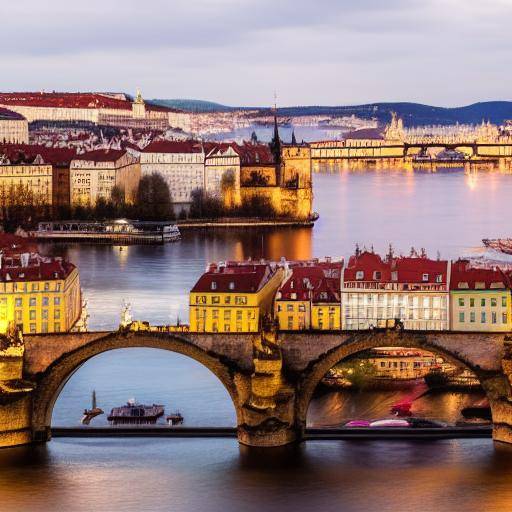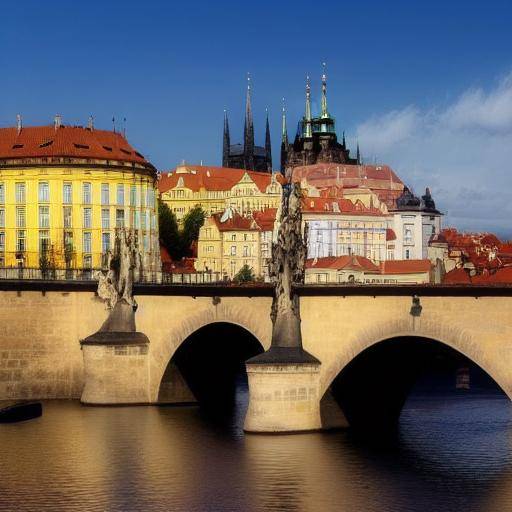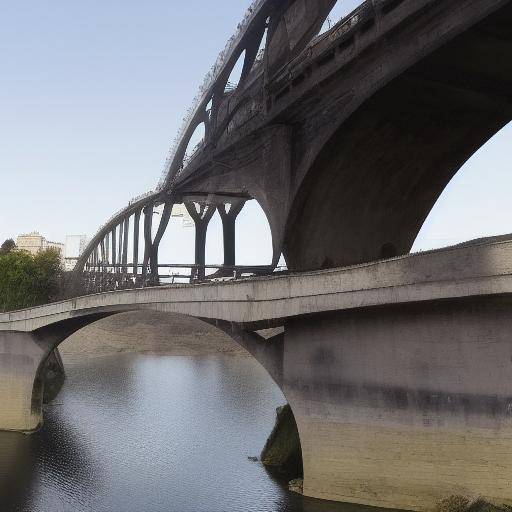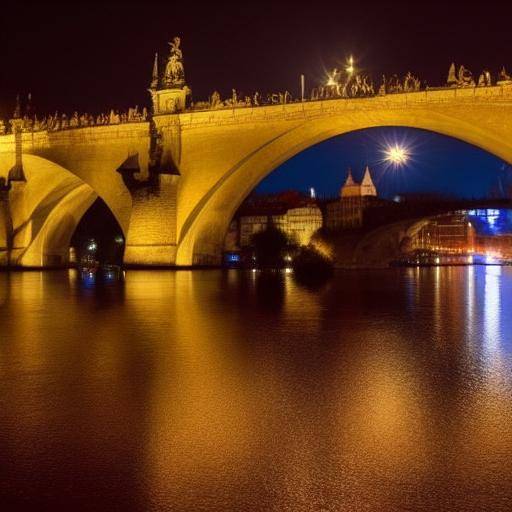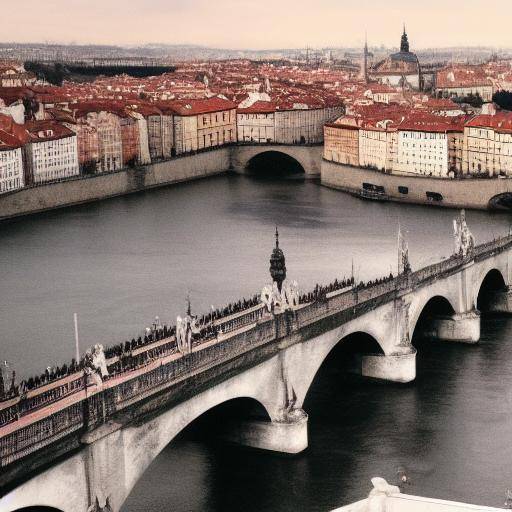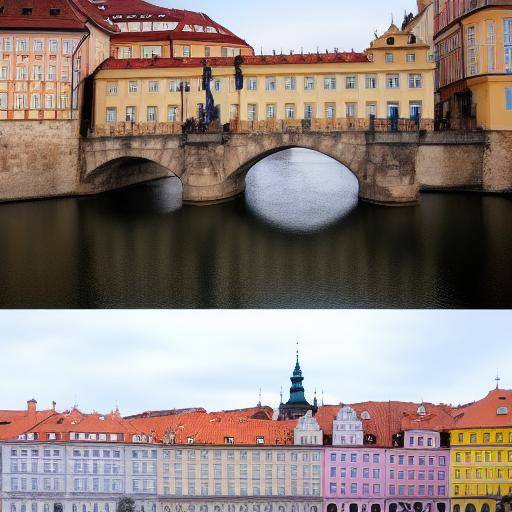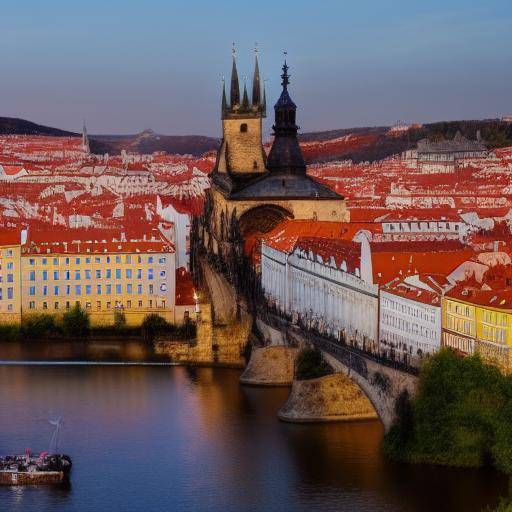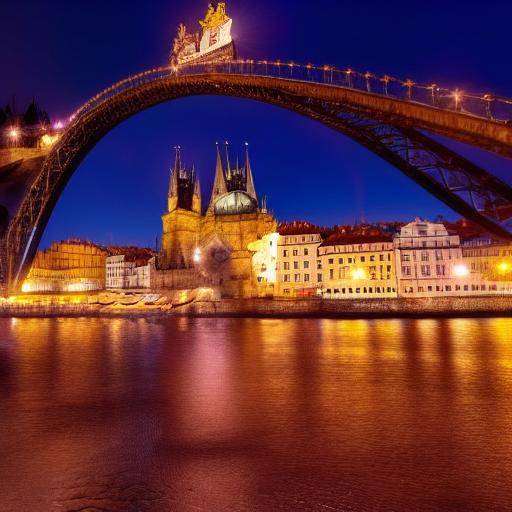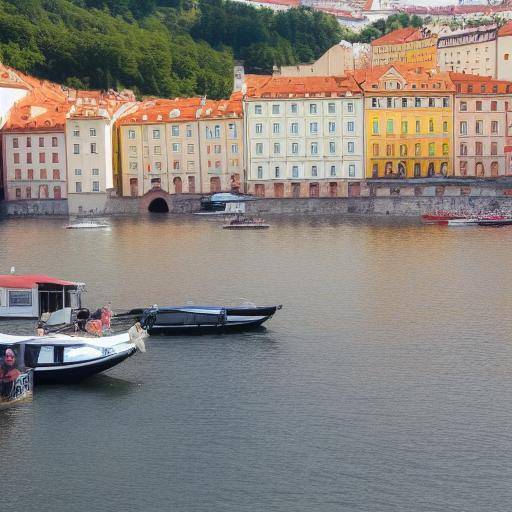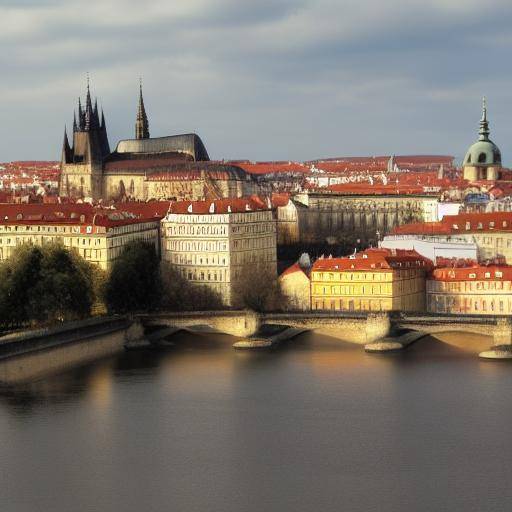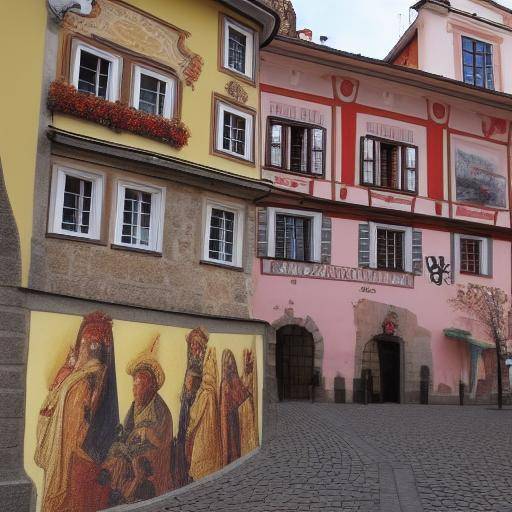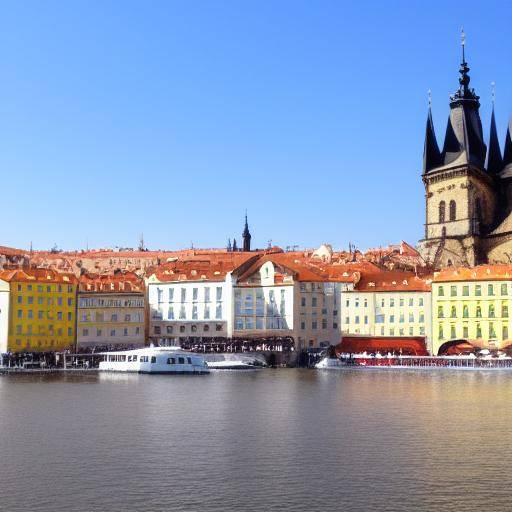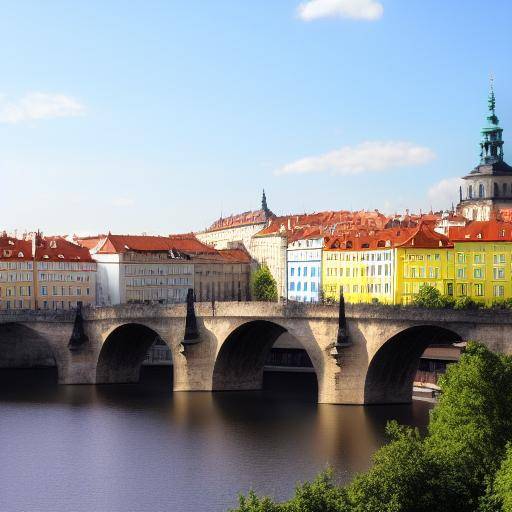
Introduction
Prague, the capital of the Czech Republic, is a city that emanates history, culture and, of course, an impressive architecture. Among its many architectural treasures, the Charles Bridge stands out as one of the most emblematic monuments in the city. In this article, we will explore the fascinating evolution of the Charles Bridge, its architectural styles and its relevance in the history of Prague. From its beginnings to its current role as a tourist landmark, this impressive structure not only tells the history of Czech architecture, but also offers valuable lessons for architecture lovers around the world.
Charles Bridge: A Historical Icon
The Charles Bridge, or "Karluv Most" in Czech, is an architectural gem that crosses the Moldava River in the heart of Prague. This majestic bridge, built in medieval times, is a lasting symbol of the history and architecture of the city. Each stone tells a history of past times and reflects the cultural wealth that permeates the city.
History and Legacy
The history of the Charles Bridge dates back to the 14th century, when the Monarch Carlos IV commissioned its construction. This magnificent stone bridge lost its original purpose as a means of transport, but it won a legendary status as an architectural monument. Over the centuries, he has resisted the passage of time and several historical events, becoming a silent witness to the evolution of Prague.
Architecture styles
The architecture of the Charles Bridge is a harmonious eclectism of Gothic and Baroque styles, with additional Renaissance elements. The sculptural decoration that adorns the bridge is an impressive display of artistic skills and architectural techniques. Each sculpture, every detail, tells a unique story that celebrates the rich artistic tradition of Prague.
Cultural and Tourist Impact
The Charles Bridge is not only an architectural achievement, but also a cultural and tourist symbol of Prague. Millions of visitors from around the world cross this bridge every year, marveled at its timeless beauty and its connection to history. This iconic structure is a living testimony of the human ability to create lasting beauty.
Evolution of the Czech Architecture through the Charles Bridge
Throughout the centuries, the Charles Bridge has witnessed the evolution of Czech architecture, reflecting the influence of different styles and artistic currents. From its construction to now, the bridge has experienced significant transformations that have made it a lasting symbol of Czech architecture.
Impact of Gothic Architecture
The Gothic style left an indelible mark on the Czech architecture, and the Charles Bridge is no exception. Its intricately carved Gothic towers and arches transport visitors to an age of medieval majesty. The repetition of Gothic elements on the bridge captures the very essence of this timeless architectural style.
Transition to the Baroque
As the Baroque architecture gained popularity in Europe, it also left its mark on the Charles Bridge. The incorporation of baroque elements in the later renovations gave the bridge a new artistic dimension. The exuberance and dynamism characteristic of the baroque merged with the original Gothic structure, creating a unique expression of architectural creativity.
Renaissance and Eclecticism
The Charles Bridge also reflects the flourishing of the Renaissance in the Czech architecture, as well as an eclecticism that merges multiple styles. The amalgam of Renaissance details in the decoration and general design of the bridge illustrates the influence of this period in Czech architecture. Eclecticism, on the other hand, shows the ability of architecture to adapt and evolve over time, incorporating elements of different styles.
Modern Innovations and Conservation
In modern times, the careful balance between conservation and innovation has been fundamental to maintaining the integrity of the Charles Bridge. Contemporary techniques and technologies have been used to preserve and restore this architectural wonder, ensuring that future generations can appreciate its historic splendor.
The Arcane Treasures of Czech Architecture
Czech architecture is an archaic treasure that offers a unique vision of the nation's artistic and cultural evolution. From medieval castles to Renaissance and Baroque buildings, Czech architecture is an amalgam of styles that reveals the multiple layers of the country's history.
Castles and Palaces
The castles and palaces of the Czech Republic are outstanding examples of defensive and residential architecture dating from different historical periods. From the iconic Prague Castle to the castles of Cesky Krumlov and Karlstejn, each structure tells a unique history of royalty, power and architectural beauty.
Religious Architecture
The churches and religious buildings of the Czech Republic reflect the importance of sacred art in the history of the country. The Gothic churches, Baroque cathedrals and Renaissance synagogues are testimonies of the profound connection of the nation with spirituality and artistic expression over the centuries.
Modern influence
Modern architecture in the Czech Republic has embraced both innovation and the preservation of cultural identity. Contemporary designs are intertwined with the country's architectural legacy, creating a dynamic fusion of styles and approaches. This interaction between the old and the new defines the wealth and diversity of contemporary Czech architecture.
Facing the Future with Valuable Lessons
The Charles Bridge and the Czech architecture as a whole serve as an inexhaustible source of valuable lessons for architects, historians and enthusiasts alike. These lessons not only cover technique and style, but also resilience, adaptability and ability to transcend time constraints. By exploring the evolution of the Charles Bridge and the Czech architecture, we opened a window to the fundamental essence of human creativity.
Conclusion
As we travel through the steep roads of Prague and contemplate the architectural wonders that adorn the city, we remember that every column, every arch, every sculpture, is more than a mere ornament. They are witnesses of the past, teachers of the present and guides to the future. The Czech architecture, personified in the Charles Bridge, teaches us that architectural beauty transcends the limits of time, and that its legacy will endure as a beacon of inspiration for generations to come.
Frequently asked questions
What is the best time to visit the Charles Bridge in Prague?
The best time to visit the Charles Bridge and enjoy its beauty is during the first hours of the morning or at sunset, when the sunlight provides a magical atmosphere and less tourist tumult.
What other outstanding examples of Czech architecture can be found in Prague?
In addition to the Charles Bridge, Prague houses a wealth of impressive architecture, including the Old Town with its famous Astronomical Clock, the Prague Castle, the Cathedral of San Vito and the Dance House, among many other architectural treasures.
Are there guided tours specialized in architecture in Prague, focusing on the Charles Bridge and other notable monuments?
Yes, there are several guided tours specialized in architecture available in Prague that offer a unique perspective on the history, styles and architectural evolution of the city. These visits provide a deeper understanding of Prague's rich architectural heritage.
How long has it been to build the Charles Bridge?
The construction of the Charles Bridge began in 1357 and was completed in 1402, which means it took approximately 45 years to finish this architectural masterpiece.
Are vehicles allowed at the Charles Bridge?
No, the Charles Bridge is reserved exclusively for pedestrians, allowing visitors to enjoy the structure and views without the interference of the vehicle traffic.
What is the symbolism behind the statues that adorn the Charles Bridge?
The statues that line the Charles Bridge represent a mixture of religious figures, saints, and important local patrons. Each statue has its own meaning and symbolism, which add depth and narrative to the experience of walking through the bridge.
What is the impact of the Charles Bridge on the identity of Prague?
The Charles Bridge has become a distinctive symbol of Prague and a crucial element in the city's identity. This iconic bridge is not only an architectural landmark, but also a central point for Prague's history, culture and tourism.
Conclusion
As we conclude our exploration of architectural lessons in Prague, we are marveled at the historical wealth and timeless beauty that the Charles Bridge and the Czech architecture represent. From its medieval origins to its contemporary role, these architectural jewels serve as living testimonies of creativity, resilience and cultural transcendence. By crossing the Charles Bridge, we not only cross a river, but also a threshold that connects us with the past and drives us into the future.
With this article, we hope to have facilitated an enriching journey through the history, styles and evolution of Czech architecture, highlighting the majestic Charles Bridge as an architectural jewel that continues to inspire admiration and astonishment in every step.

